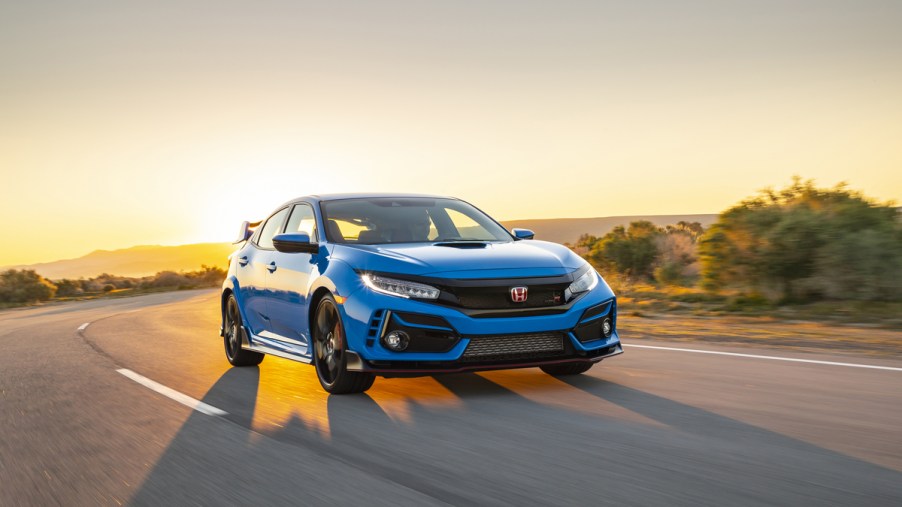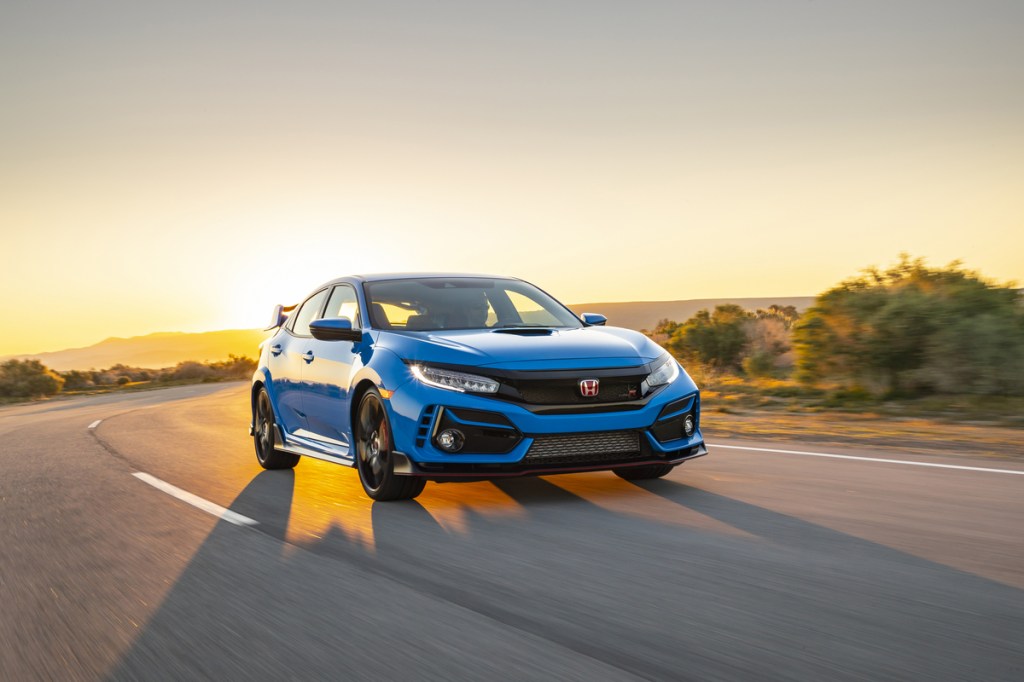
How Safe Is a Honda Civic Type R?
Since its inception into the American market, the Honda Civic Type R has become one of the most popular sport hatchbacks ever produced. Known for its superior handling characteristics and potent turbocharged engine, the Civic Type R is a blast to drive on the streets and on the track. But just how safe is it?
The Honda Civic Type R has advanced safety features

While it’s easy to think that the 2021 Honda Civic Type R is a genuine racecar – given its specs – it’s not. The Civic Type R might have a 306-hp engine and a track-ready adaptive suspension, but it’s just as safe as any other Civic in Honda’s lineup. In addition to the brand’s Advanced Compatibility Engineering (ACE) body structure, which better absorbs and deflects energy in a frontal collision, the Civic Type R plays host to other passive safety features.
According to Honda’s website, those passive features include advanced front airbags, SmartVent front side airbags, side curtain airbags with a rollover sensor, and a rear-seat LATCH system for smaller children. To keep those smaller children inside the car when it’s moving, there are also child safety locks on the rear doors. Who says that a street-focused racecar can’t be family-friendly?
The Civic Type has plenty of active safety features as well

In addition to the passive safety features that keep occupants safe in the event of an accident, the Civic Type R also has some active safety features that can prevent one from happening in the first place. First and foremost, the Civic Type R comes standard with the brands’ Honda Sensing suite of driver-assist features.
This suite includes features like a forward collision warning, lane departure warning, a collision mitigation braking system, and road departure mitigation. These systems work to keep the car driving straight and on the road, while other systems like adaptive cruise control and lane-keeping assist aid in driver fatigue while cruising on the freeway.
The Civic Type R performed well in safety testing
While all of these active and passive safety features make the Civic Type R appear safe on paper and in theory, putting them to use is another story. Fortunately, the 2021 Honda Civic scored high marks with the National Highway Traffic Safety Administration (NHTSA), which granted it an overall safety rating of five out of five stars.
It also received five stars in the overall side crash ratings, which includes a side barrier and side pole ratings, as well as in the rollover testing. The IIHS fortified these ratings by giving the Honda Civic Hatchback a “Top Safety Pick Award,” which is the result of the car receiving “good” marks across the board when it came to the agency’s crash testing procedures.
The Civic was also rated as “superior” under the front crash prevention categories and a “good” rating for its headlights. However, the Civic Hatchback missed the mark by not offering standard LED headlights, which cost it the “Top Safety Pick +” designation.
The Honda Civic Type is safe
With all these different safety technologies in place, in addition to the successful testing to back it up, it’s safe to say that the Honda Civic Type R is indeed safe. The car has a lot of power and handling prowess to keep almost any driver smiling from ear to ear when driven spiritedly, but it also has the safety features to keep all of the occupants safe, and hopefully smiling, after a collision.



